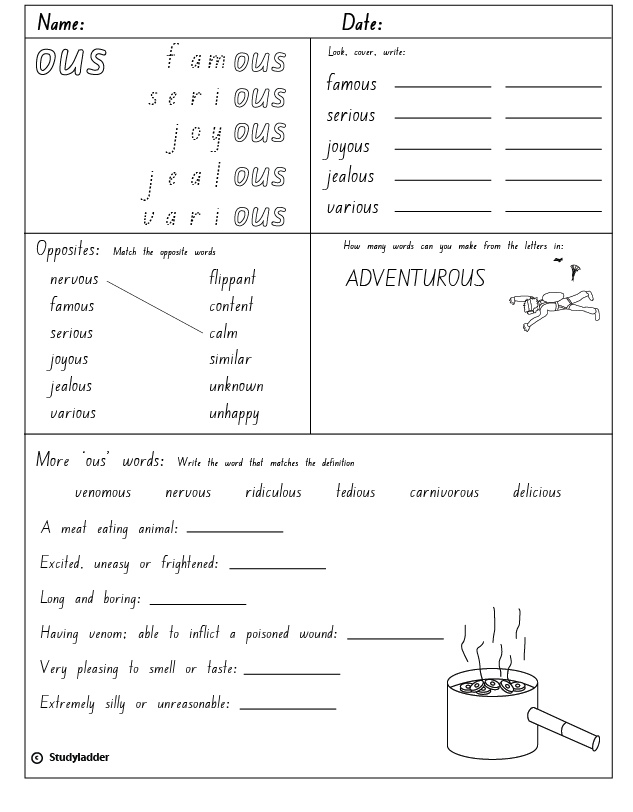Letter combination 'ous'
- Grade: Grade 4
Activity type: Printable
To save results or sets tasks for your students you need to be logged in. Join Now, Free
Letter combination 'ous'
- Course
English - Grade
Grade 4 - Section
Spelling Worksheets - Outcome
Word Building (4) - Activity Type
Printable - Activity ID
22593

